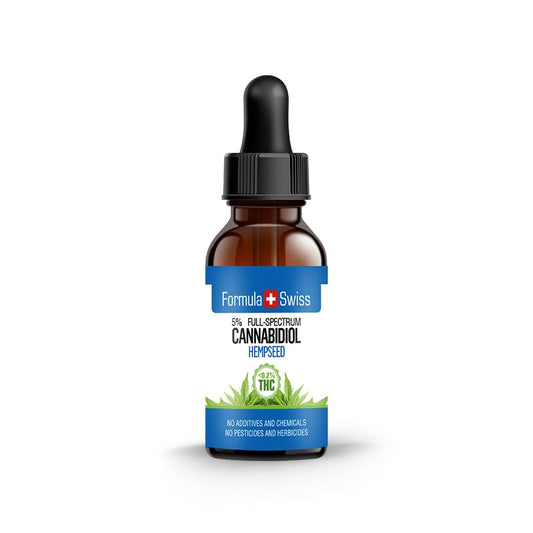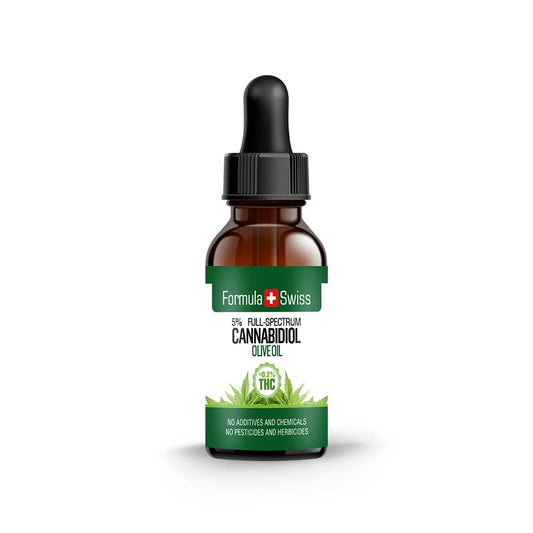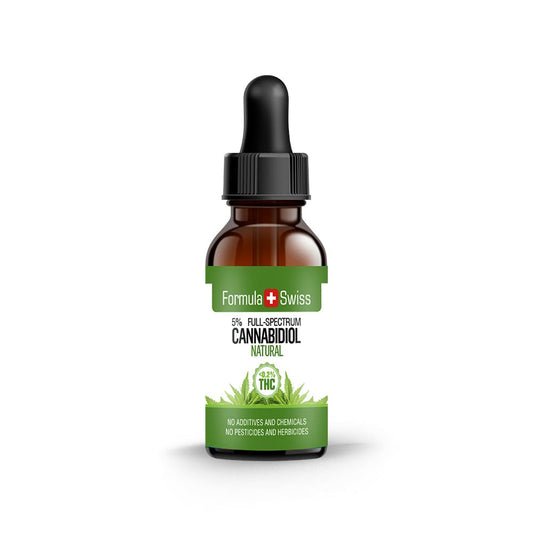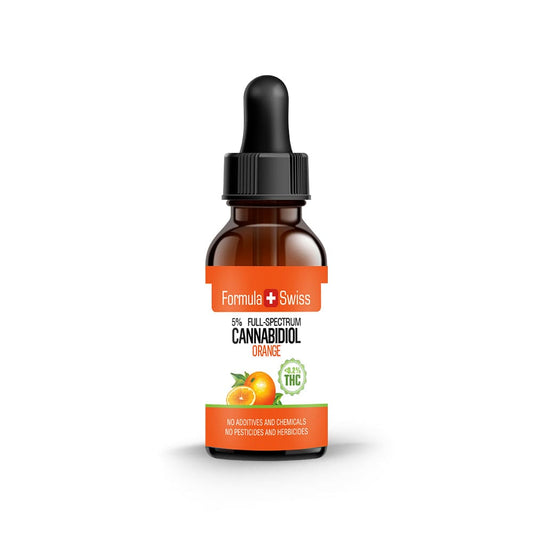CBD (cannabidiol) is one of the most widely studied cannabinoids in the cannabis plant. Unlike THC, it does not produce psychoactive effects and has become a central focus of scientific investigation.
Its non-intoxicating profile has contributed to its prominence in research discussions and its growing presence across various sectors of product development.
Through my work following cannabinoid research at Formula Swiss, I have observed the increasing attention given to CBD’s role within the body’s natural regulatory systems. Ongoing studies continue to shed light on how CBD differs from other cannabinoids and why it remains such a prominent subject within cannabis science.
Building a clear understanding of CBD’s properties is important for those seeking reliable information. As research into cannabinoids continues to grow, maintaining a balanced and well-documented perspective on compounds such as CBD is vital for supporting informed discussion and responsible progress in the field.

Key takeaways
- CBD is non-psychoactive and does not produce intoxicating effects
- It interacts with the body’s natural regulatory systems
- Available in various formats such as extracts, vapourised liquids, capsules, and topicals
- Scientific studies continue to investigate its characteristics and applications
- Product transparency and third-party testing help support quality and trust
- CBD may cause mild side effects and could interact with certain substances
This article is provided for informational purposes only and does not relate to any of the products available in our webshop. For more information, please see our full disclaimer.
The origins and discovery of CBD
CBD (cannabidiol) was first identified in 1940 by American chemist Roger Adams, who successfully isolated the compound from the cannabis plant. While Adams was able to extract CBD, its full structure and characteristics were not completely clarified until later studies distinguished it from THC and recognised its non-psychoactive profile.
Since that time, CBD has become a central focus in scientific studies examining the complexity of the cannabis plant. A 2011 review published in the British Journal of Clinical Pharmacology highlighted CBD’s broad pharmacological profile and its growing significance within cannabinoid research.
Ongoing research continues to expand knowledge of CBD, helping to establish its distinct place among cannabis-derived compounds and its contribution to understanding the wider cannabinoid spectrum.
CBD has gained increasing recognition as a non-psychoactive compound derived from the cannabis plant. Unlike THC, CBD does not produce intoxicating effects, and its distinct characteristics have made it a subject of growing interest within scientific research.
Extracted primarily from cannabis sativa, CBD is now incorporated into a variety of products across different sectors. As research continues to expand, interest in understanding CBD’s role among the many compounds found in the cannabis plant remains strong.
Prefer watching over reading? This video covers the key points from the article:
What is the difference between CBD and THC?
Different forms of CBD products
CBD is incorporated into a variety of product types, including oils, extracts, vaporised liquids, capsules, and topicals. These different forms offer options for individuals who wish to choose a format that aligns with their preferences and routines.
From my experience following cannabinoid research at Formula Swiss, I have observed the increasing diversification of CBD product formats over recent years. CBD oils remain among the most widely recognised forms, while extracts offer a more concentrated format for various applications.
Vaporised liquids provide an alternative option, capsules offer a familiar structure for measuring quantities, and topicals are intended for external application to the skin.

| Form | Advantages | Disadvantages |
|---|---|---|
| Oils | Familiar and widely available | May have a strong aroma or taste |
| Extracts | Highly concentrated | Can be more expensive |
| Vaporised liquids | Alternative format with fast onset | Requires specialised equipment |
| Topicals | Applied externally to targeted areas | Surface application only |
Buy CBD oils with less than 0.2% THC here
CBD in food and drinks
CBD (cannabidiol) is increasingly incorporated into a range of food and drink products, reflecting broader interest in cannabinoids beyond THC. Extracted from the cannabis plant, CBD is recognised for its non-psychoactive properties and continues to be a subject of scientific study.
CBD-infused food and beverages are now available in a variety of formats, including confectionery, teas, coffees, and non-alcoholic cocktails. These products offer a way for individuals to explore cannabinoids in different settings. While interest in CBD-infused consumables is growing, it remains important to rely on reputable sources and verified product information.
| Considerations for CBD-infused products | Examples of available products |
|---|---|
|
|

CBD in beauty and skincare
CBD (cannabidiol) has attracted growing attention in the beauty and skincare sector for its inclusion in a wide variety of topical formulations. It is now found in products across cosmetics, skincare and personal care ranges.
CBD-based formulations include facial serums, creams, cleansers, toners, body lotions and oils. These are designed to complement broader skincare routines and are applied topically. CBD is also incorporated into bath products, hair care and massage oils, highlighting its expanding presence within the beauty industry.
As with any ingredient, awareness of product quality, formulation standards and individual preferences remains important when selecting CBD-based skincare or cosmetic products.

Discover our CBD skincare collection here
The endocannabinoid system (ECS)
CBD interacts with the body’s endocannabinoid system (ECS), a complex cell-signalling network involved in regulating many physiological processes such as mood, pain sensation, appetite, and immune response.
How CBD interacts with the endocannabinoid system
To understand how CBD works, it helps to look more closely at the endocannabinoid system:
- CB1 receptors are primarily found in the brain and central nervous system and are associated with regulating mood, memory, and the perception of pain.
- CB2 receptors are mainly found in the immune system and are involved in regulating inflammation and immune responses.
Unlike THC, which binds directly to CB1 receptors, CBD interacts indirectly with both CB1 and CB2 receptors. It is thought to enhance the body's own production of endocannabinoids, supporting balance (homeostasis) without causing intoxication.
What is endocannabinoid system?
Purity and content accuracy in CBD products
Maintaining product purity and accurate content labelling is essential for upholding quality and safety standards. Transparency measures, including third-party testing, play a key role when evaluating cannabinoid-based products.
Further details on our laboratory testing procedures and product certifications can be found in our quality report.
Reputable manufacturers generally provide independent laboratory analysis to verify CBD content and check for potential contaminants. This level of transparency helps confirm that product labels accurately reflect the contents, supporting well-informed purchasing decisions.
CBD levels in products may vary, and preferences differ between individuals. By prioritising transparency, purity and accurate content reporting, consumers can choose products that best match their expectations and requirements.
Does CBD have an intoxicating effect?

CBD and FDA approval
CBD has been approved by the United States Food and Drug Administration (FDA) for use in a prescription medicine targeting rare and severe forms of epilepsy. This marked a significant milestone in the study of cannabinoids and their regulated applications.
The approval applies only to a specific prescription formulation and highlights the controlled conditions under which CBD is currently recognised in healthcare. As outlined in scientific literature (PubMed), this decision illustrates the cautious but growing interest in CBD within research and clinical contexts.
It also underscores the importance of continued investigation into cannabinoids, their interactions and their possible roles in regulated settings. Outside of approved medical use, CBD products should be considered carefully, with attention given to quality, labelling and transparency.
Advances in the scientific study of CBD
Scientific research into CBD continues to expand, with studies examining how it may interact with different biological systems. Current areas of investigation include neurological processes, mood regulation, inflammatory pathways and other complex mechanisms. These studies are being carried out internationally under controlled research conditions to assess both safety and function.
One of the most notable developments has been in the area of epilepsy. A prescription medicine containing CBD has been approved by the U.S. Food and Drug Administration (FDA) for specific rare forms of epilepsy, based on targeted clinical data. This milestone has prompted continued interest in studying CBD within other research contexts.
A systematic review published in Experimental Neurology analysed available evidence on CBD in relation to treatment-resistant epilepsy, particularly in paediatric cases.
 Additional studies have explored CBD’s potential role in mood-related processes. Preliminary investigations, primarily in animal models, have focused on serotonin-related pathways. The National Institute of Mental Health has noted the growing interest in this field while emphasising the importance of larger, well-controlled clinical trials.
Additional studies have explored CBD’s potential role in mood-related processes. Preliminary investigations, primarily in animal models, have focused on serotonin-related pathways. The National Institute of Mental Health has noted the growing interest in this field while emphasising the importance of larger, well-controlled clinical trials.
In the context of pain-related research, early-stage studies have examined CBD in relation to inflammatory mechanisms and neurotransmitter activity. Reviews, including one in Neurotherapeutics, have outlined current progress while stressing the limited number of high-quality human trials available.
Further research is also underway on neurodegenerative conditions such as Alzheimer’s and Parkinson’s disease. Initial preclinical findings suggest possible links with markers of oxidative stress and inflammation, but these remain preliminary and require extensive validation in human studies.

Making informed choices about CBD
From my experience following cannabinoid research at Formula Swiss, informed decisions about CBD begin with assessing transparency, product quality and manufacturing standards.
Reputable companies typically provide independent third-party laboratory testing, detailed sourcing information and clear documentation of production practices. This helps support confidence in product consistency and integrity. You can review our quality report for further details on our testing procedures and certifications.
Equally important is understanding the content and formulation of CBD products. Reviewing cannabinoid levels, ingredient lists and product certifications helps ensure clarity about what is being purchased.
By prioritising transparency and accuracy, individuals can make well-informed decisions when selecting CBD products that meet their preferences and align with recognised quality standards.

Personal perspective
Following cannabinoid research at Formula Swiss, I have observed the increasing scientific focus on CBD and its place within broader studies of cannabinoids.
CBD’s non-intoxicating profile and its distinct differences from THC have made it a prominent subject of study across multiple sectors, including wellness, food and skincare.
It is encouraging to see research expanding internationally, with growing interest in CBD’s interactions at the biological level, alongside greater emphasis on transparency and quality standards in product development.
Recognising the unique characteristics of CBD is important for supporting informed discussions and responsible progress within the cannabinoid industry.
In my view, maintaining a strong commitment to accurate information, scientific evidence and adherence to recognised standards is vital as public interest in CBD continues to grow.
By fostering careful engagement with research findings and encouraging responsible communication, the industry can help ensure that the study and application of CBD continues to develop with clarity and integrity.
Get our CBD oil with less than 0.2% THC here
Frequently asked questions
What is CBD?
CBD, short for cannabidiol, is one of at least 113 identified cannabinoids found in the hemp plant. It is a naturally occurring compound used in a variety of products, including oils and topical formulations. CBD is studied for its interactions with the body's natural systems.
Can you get 'high' from CBD?
No, CBD does not produce intoxicating effects. Unlike THC (tetrahydrocannabinol), which is the psychoactive component in cannabis, CBD is non-psychoactive and does not cause a "high."
Is CBD oil safe or addictive?
Research to date suggests that CBD is generally well-tolerated in controlled settings. It is not associated with the psychoactive effects linked to THC. However, individual responses can vary, and consultation with a qualified healthcare professional is advisable when considering CBD products.
Can you overdose on CBD?
Current scientific studies have not identified a known lethal dose of CBD. However, research into the long-term effects and safety profile of CBD remains ongoing. It is advisable to use CBD products responsibly and seek professional guidance when needed.
Are CBD oil and hemp seed oil the same thing?
No, they are different. CBD oil is extracted from the flowers, leaves, and stalks of the hemp plant and contains cannabinoids such as CBD. Hemp seed oil is extracted from hemp seeds and typically contains minimal cannabinoid content.
How and where is CBD grown and harvested?
CBD is extracted from hemp plants that are specifically cultivated to contain low amounts of THC while yielding higher concentrations of CBD. These plants are grown following agricultural practices aimed at maintaining product quality and meeting established industry standards.
How do I determine the appropriate amount of CBD?
The amount of CBD suitable for an individual can vary depending on factors such as body composition, product type, and individual response. Consultation with a healthcare professional is recommended to support informed decisions about CBD product selection and use.
What is the difference between hemp and marijuana?
Hemp and marijuana are both varieties of the Cannabis genus but differ in chemical composition. Hemp typically has high levels of CBD and very low THC levels, while marijuana generally has higher concentrations of THC.
How are CBD extracts made?
CBD extracts are produced using methods that separate cannabinoids from the hemp plant. Common techniques include CO2 extraction, which uses pressurised carbon dioxide, and ethanol extraction, which uses alcohol-based solvents. Each method can influence the final product's composition and purity.
What is the difference between CBD and THC?
CBD (cannabidiol) and THC (tetrahydrocannabinol) are two individual cannabinoids, each possessing distinct properties. CBD is non-psychoactive and continues to be explored for its possible applications in various areas of interest. In contrast, THC is psychoactive and is recognised for producing the "high" commonly associated with cannabis use. Both interact differently with the body's endocannabinoid system, influencing various biological processes in unique ways.
Learn more about THC and how it differs from other cannabinoids






